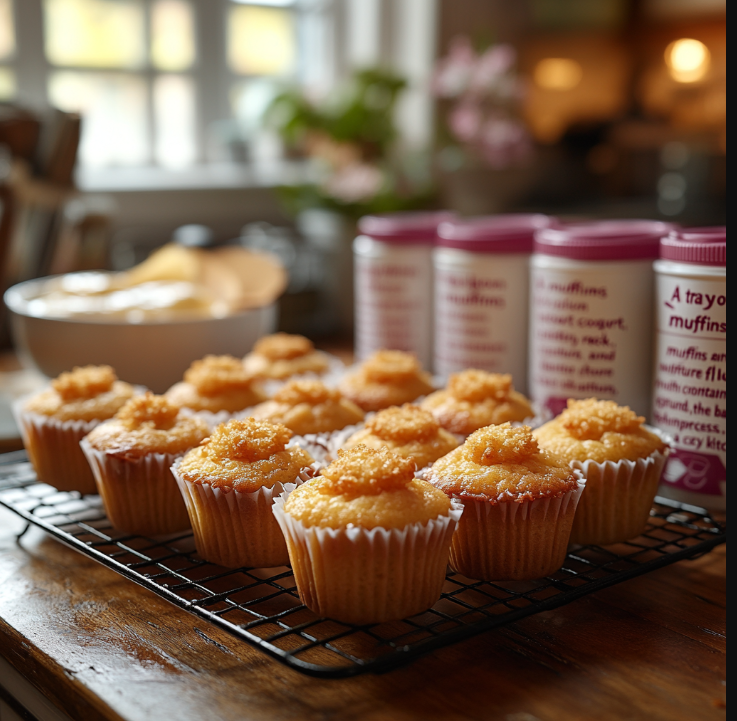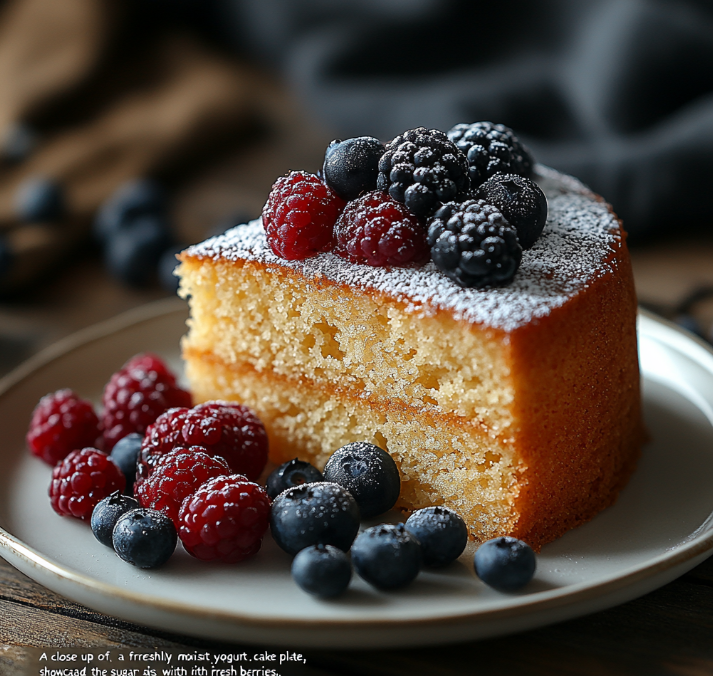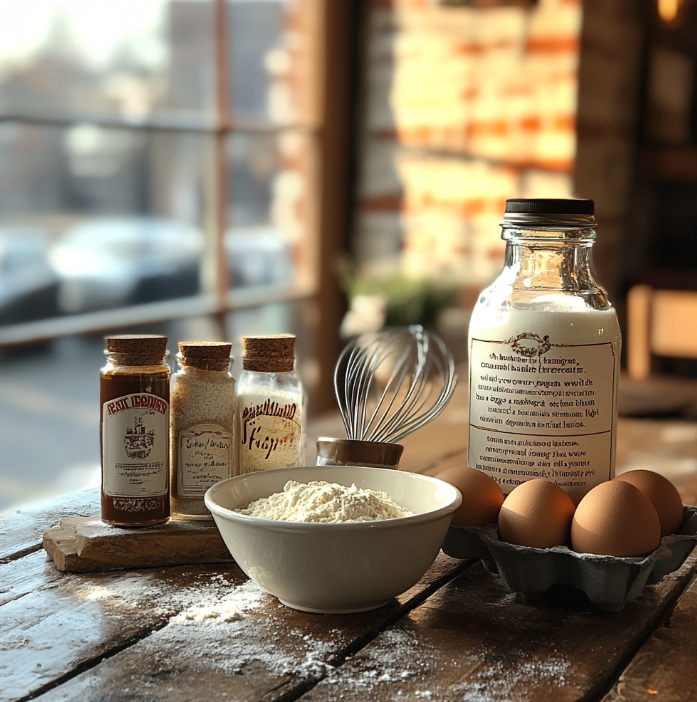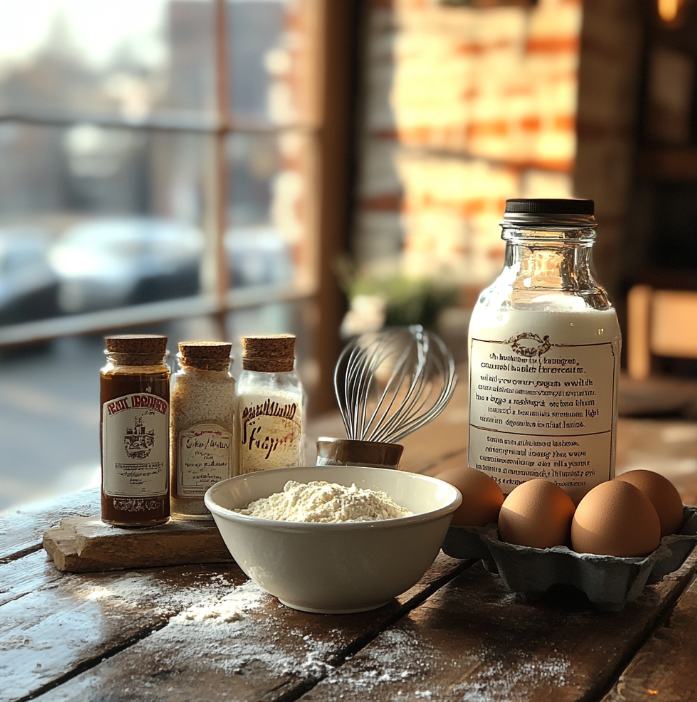If you’ve ever wondered why yogurt is such a popular ingredient in baking, the answer lies in its ability to improve moisture, texture, and flavor in a variety of baked goods. From cakes to muffins, yogurt can transform the texture of your desserts, making them lighter, more tender, and incredibly delicious.
Yogurt’s acidity plays a key role in baking, especially when paired with leavening agents like baking soda. This reaction helps baked goods rise, resulting in a fluffier texture. You can explore more about how dairy works in baking by checking out this yogurt cake recipe, which highlights yogurt’s unique role in creating a moist crumb.
What Does Yogurt Do in Baking?
Yogurt serves multiple purposes in baking, including:
- Moisture: Yogurt keeps baked goods tender and prevents them from drying out.
- Tangy Flavor: The slight acidity of yogurt adds a subtle tang, balancing the sweetness of your cakes or muffins.
- Leavening Agent: When combined with baking soda, yogurt helps create a lighter, fluffier texture.
This versatility makes yogurt a staple in many baked goods. If you want to try another recipe where yogurt enhances both moisture and flavor, take a look at this delicious lemon lush dessert.

How Yogurt Affects Texture and Moisture
One of the most important things yogurt does in baking is improving the texture. It breaks down the gluten in flour, creating a softer, more tender crumb. This is especially helpful in recipes like muffins, cakes, and quick breads, where a light and fluffy texture is essential.
Here’s how yogurt compares to other common ingredients:
- Sour Cream: Both yogurt and sour cream add moisture, but yogurt is lighter and has less fat, making it a healthier alternative.
- Milk: While milk provides moisture, yogurt offers both moisture and a slight tang, which enriches the flavor.
For example, if you’ve ever baked a pie and struggled with getting the filling just right, try adding yogurt. It works wonders in desserts like coconut cream pie, helping to create a smooth and rich consistency.

Substituting Ingredients with Yogurt
One of yogurt’s best features in baking is its versatility as a substitute for other ingredients:
- Sour Cream: Yogurt can be swapped in a 1:1 ratio for sour cream, offering similar moisture and tang with fewer calories.
- Buttermilk: Thinning yogurt with a bit of water or milk allows it to replace buttermilk in pancakes or quick breads.
- Mayonnaise: In savory baked goods, yogurt can replace mayonnaise for a lighter alternative.
However, yogurt doesn’t have the same fat content as butter, so it cannot fully replace butter in baking. Always consider the role of the ingredient in your recipe before making a substitution.
Popular Baked Goods Using Yogurt
Yogurt shines in a variety of baked goods, providing moisture and lift to different recipes. Here are some examples:
- Yogurt Cake: A classic yogurt cake stays moist for days, perfect for snacking or as a simple dessert.
- Muffins: Adding yogurt to muffin batter makes them lighter and fluffier, reducing the need for oil or butter.
- Pancakes & Waffles: Yogurt adds fluffiness and a slight tang to your favorite breakfast staples.
- Quick Breads: Recipes like banana bread or lemon loaf benefit from yogurt’s moisture-retaining properties.
If you’re looking for a new recipe to try, check out this lemon cream cheese dessert, which combines yogurt’s tangy flavor with the richness of cream cheese.

Types of Yogurt for Baking
Not all yogurts are created equal. Here’s a breakdown of which yogurt types work best for baking:
- Plain Yogurt: The most versatile option for baking, with a neutral flavor.
- Greek Yogurt: Thicker and creamier, it adds richness to recipes, but you may need to thin it out with milk.
- Flavored Yogurt: This can be used, but be mindful of added sugars, which may affect the sweetness of your recipe.
For best results, opt for full-fat or low-fat yogurt depending on the richness you want to achieve.
Tips for Using Yogurt in Baking
When baking with yogurt, keep the following tips in mind:
- Use Plain Yogurt: Always use plain, unsweetened yogurt to avoid changing the flavor profile of your dish.
- Room Temperature: Let your yogurt come to room temperature before adding it to your batter to prevent curdling.
- Thinning Greek Yogurt: If using Greek yogurt, thin it with a bit of milk to achieve a similar consistency to regular yogurt.
By following these tips, you can ensure your baked goods turn out tender and delicious.
FAQs About Yogurt in Baking
What does yogurt do in baking?
Yogurt adds moisture, tenderness, and a slight tang, while helping baked goods rise through its reaction with baking soda.
Can you substitute yogurt for milk in baking?
Yes, yogurt can replace milk in a 1:1 ratio, though you may need to thin it with water to match milk’s consistency.
What type of yogurt is best for baking?
Plain, full-fat yogurt is ideal, but Greek yogurt can also be used for a richer texture.
Can yogurt replace butter in baking?
Yogurt cannot fully replace butter due to its lower fat content, but it can replace ingredients like sour cream or buttermilk.
Is Greek yogurt better than regular yogurt in baking?
Greek yogurt adds a denser, richer texture, but may need to be thinned out to achieve the right consistency.
Conclusion
Using yogurt in baking can enhance both the texture and flavor of your baked goods. Whether you’re baking muffins, cakes, or quick breads, yogurt adds moisture, tenderness, and a slight tang, creating lighter and fluffier treats. Next time you’re in the kitchen, try incorporating yogurt into your favorite recipes and enjoy the difference it makes!

